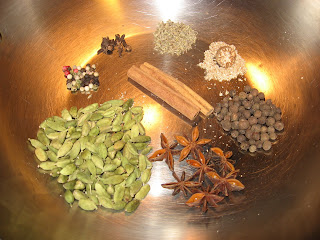Now that we have the history, basis, and general idea of what annual cropping and Permaculture look like, we can talk about usage. Time to get dirt under the fingernails!
Annual cropping is what most people think about when they think raising their own food. Somehow an 'orchard' is something seperate, something different than all that. They want to segregate. However, plants are quiet, industrious Extroverts. They like being together. So when people seperate out one type of plant -- like monocropping or specimin exhibitions:


The plants don't do nearly as well as they would in a diverse environment. One of the reasons for this is space. If you look at a forest, you'll see that as much cubage as possible, up to the canopy, is taken up with living things. Everything fits together like a 3-D jigsaw puzzle. But most modern gardens are laid out like this:
It doesn't have to be laid out that way. You can be efficient AND lazy all at once. Permaculture helps us understand making use of multiple uses for one thing, as nature has been doing for a while now. For instance: asparagus is a tall, feathery-leaved plant that will be happy in one spot for twenty or more years. And it's obvious that you can plant around it because there's lots of space around it for most of the year when it's dormant. So interplant: the asparagus can get really tall and strawberries can cover the ground.
Now you've saved the trouble of weeding, watering, fertilizing, mulching, and worrying over two plots. Actually, the strawberries will shade out the weeds, so you're doing what a forest does: multiple uses, rising up into the air, with no room wasted.
This kind of philosophy works with all kinds of plants. Too hot for lettuce? Grow your beans on an incline (fence, sticks, whatever) to make dappled shade that the lettuce will love. Too cold for squash? Grow them on top of your compost pile -- the heat from the little beasties is perfect. Too wet for your garden? Stick in celery and asparagus, they love mucky ground, and will help dry up that corner of the garden.
Okay, this is what blew my mind when I first learned it. This type of permaculture-inspired philosophy works for all TYPES of agruiculture, too. Put flowers in the veggie garden so you'll get more pollinators, and so predators will hang out waiting to knock out an infestation of pests. Put a cuke vine up the side of the chicken pen, it will love the nitrogen and the chickens love cuke leaves. Annual planting throughout the year works just fine into winter, even in Maine, so when the beans come out, stick in cabbages:small plants will shade out the weeds just as you rip up the beans and the rotation of the crops confuses pests. Stick a permaculture kiwi vine overhead and plant annual herbs around the base. Let roses do their thing with their weird backward-facing thorns: they climb up fruit trees to deter raccoons. Multiple uses for any one thing means that the puzzle pieces can be fit together in multiple ways, and that means you can plan for as many uses as you can dream.
These theories, which lead to wide rows/beds, interplanting, multiple uses, and space stacking mean less work and more results. Pardon me while I get a cool drink and footrest *eyebrow wiggle*.
Fun Fact for this post: Some plants are 'meh' to each other. Some catfight while many grow better in close proximity. Taking advantage of Companion Planting can increase yields, deter pests, increase nutritional value, and even make you sleep deeper at night.
Okay, not that last part. I was trying too hard, sorry. But the rest of it is true.





















